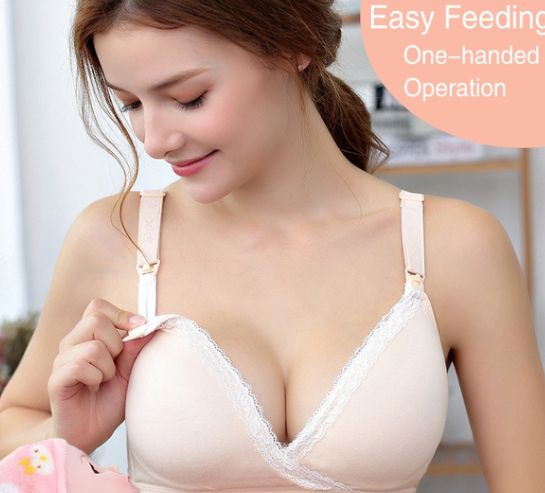Choosing a Breastfeeding Bra
By Laura Silvas, RN IBCLC
With a simple internet search, you can find hundreds of choices for bras for breastfeeding mothers. While it is encouraging to have so many options, it can also quickly become overwhelming.
Underwire? Material? Size? At LEVA, we want to make your breastfeeding journey as smooth as possible, including helping you pick out a bra that works best for you.
Where do I start with picking out a breastfeeding bra?
Comfort is the key when selecting a bra. However, it is slightly different when considering issues such as engorgement, leaking, pumping access, nursing access, straps, clips, bands, etc. The rule of thumb is to avoid underwire bras (does anyone like those anyway?) While they may provide support for everyday wear, the wire places unnecessary restrictions on the milk ducts. The pressure and hard structure can lead to clogged or damaged ducts. The same thought applies to sports bras. Many women think a sports bra is an easy alternative and is usually something they already have on hand. Unless the sports bra has enough space for the breasts to grow and is easy to pull down, it's best to avoid a tight sports bra, as it can bind the breasts, preventing them from filling with milk.
Fabric
There are also a variety of bra fabrics, ranging from "yoga material" to regular cotton/polyester blends. If this is your first time buying a nursing bra, or it's been a while since you last bought one, I recommend buying a few different brands to see what you prefer. A softer material is usually preferable, especially if it'll be rubbing against your baby during nursing sessions.
Function
Another important thing to consider is the functionality of the bra. Are you using this for just nursing? Pumping only? Both? The cup typically folds down from a clip attached to the strap with a nursing bra. A pumping bra has similar functionality but has holes around the nipple that holds the flanges in place, allowing you to pump hands-free. Other pumping bras appear like a band that you fasten around your chest. Some brands offer both nursing and pumping features in one bra, so you do not have to change throughout the day.
Sizes
With pregnancy, engorgement, and during the duration of your breastfeeding journey, your breasts will continue to change. Some women may see a change in size during pregnancy, while some may not notice a difference until their milk comes in. A good rule of thumb is to go a cup size up from your pre-pregnancy size. Not all bras come in cup sizes, but XS-XL, for example. Just like other clothes, some brands will fit differently. It's helpful to have a few packed in your hospital bag and order more as you discover what size and style you enjoy.
A few helpful features include adjustable straps and extra attachments around the waist. These little additions give you more options for support, as well as extra room if need be.
Types of Bras
Most brands carry a variety of nursing bra styles now. The first step is determining the type of bra (nursing or pumping) you will need. Thankfully, the market now offers different bras for different occasions as well. Night out? A lacy pumping bra with an underwire may be the answer, but avoid wearing it for extended periods. Are you an avid runner? A stretchy but supportive bra with a nursing feature may be what you need. Another type of bra to look into is the sleep bra. I know what you're thinking, "I have to wear a bra when I sleep?!". The answer to this question is totally up to you. These bras are typically made from thin cotton or soft materials. One beneficial feature of sleep bras is that they can hold nursing pads in place, preventing you from soaking the bedsheets.
Conclusion
Finding the right bra for you is just another step in your nursing journey. Researching, trying different styles, and asking for suggestions can all be helpful. If you need help or recommendations, feel free to contact Leva's Lactation Consultants.


